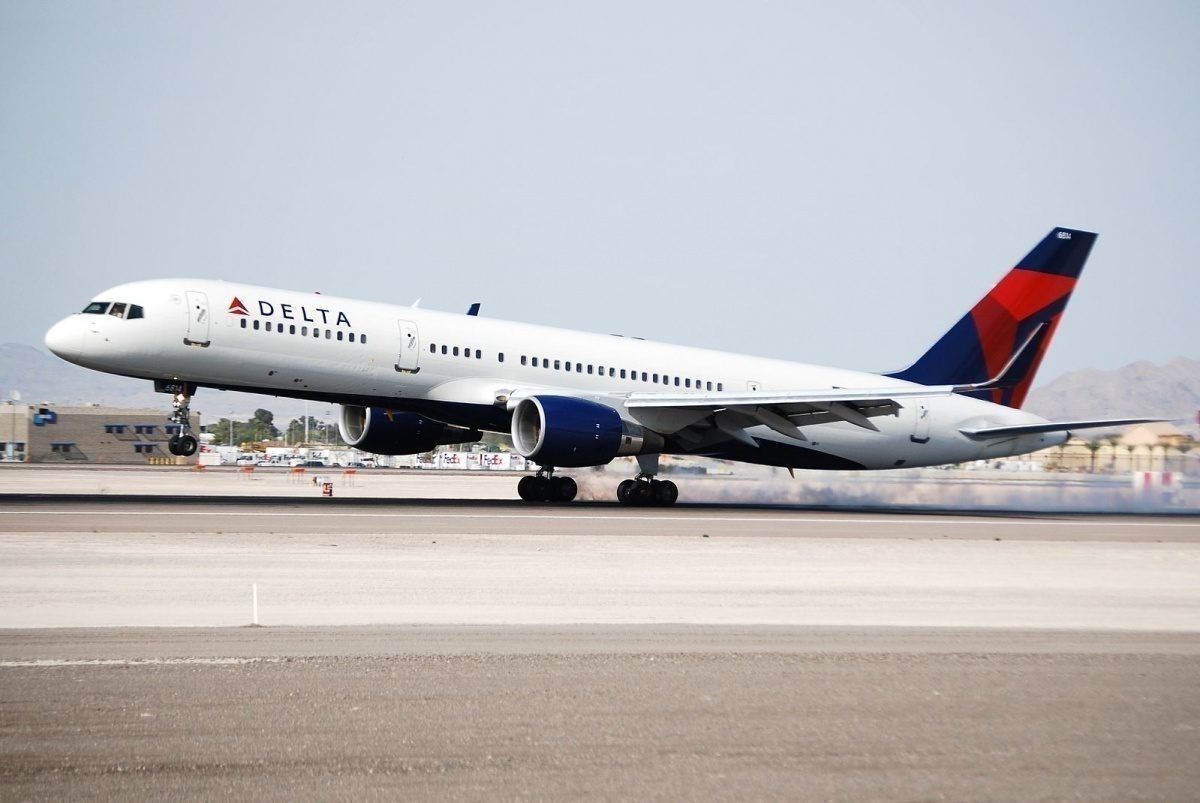The FAA is investigating a runway incursion at JFK involving two Delta Boeing 757s, one of which was reportedly well into its takeoff roll. One aircraft had just arrived from St. Maarten and crossed the active Runway 22R after being told to hold short. A tower controller spotted the errant aircraft and ordered the crew of the other aircraft, which was headed to Bogota, to abort its takeoff at high speed. The two planes were still almost a mile apart when the departing aircraft was able to slow enough to exit the runway on a taxiway. The pilot on the arriving aircraft accepted responsibility, according to a published transcript of the tower tape.
“Delta 300, you were instructed to hold short of Runway 22R,” the agitated controller said. “Sorry about that, we missed that,” responded the pilot. “I said hold short of 22R and I asked you for the gate number,” the controller reiterated. The arriving flight had coincidentally been assigned Gate 22 and that apparently created some confusion. ”That’s my fault, I just heard what you said and repeated back the wrong thing,” the pilot said. The arriving flight was cleared to the gate and the other aircraft was on its way to Colombia about 30 minutes later, according to the Aviation Herald.




































The FAA and Delta will deal with the captain in good order. In my mind this individual gets high marks for admitting a mistake.
There is a recording of the incident on YouTube. Bit more to it. Assuming all the audio was captured and no one was stepped on – also sounds like the controller failed to insist on a read back of a “hold short” from the offending plane.
Holding short or crossing an active runway is a critical maneuver which always requires a readback to the controller. I’ve just listened to the audio of this occurrence on the VASAviation YT channel and my sympathy lies with the pilot who was thrown two unrelated issues in 2.4 seconds by a super-fast talking controller who failed to enforce readback of the holding instruction. The FAA needs to take a serious look at reducing the need for such rapid-fire communication to minimise the opportunities for miscommunication – or perhaps pilots should request the controller to speak at a rate which is intelligible and minimises the opportunity for error.
Controllers seem to forget that a pilot is doing much more that merely listening intently to the controller’s rapid-fire instructions. The priorities 1)aviate 2)navigate 3) communicate apply as much on the ground as in the air.
PICs need to start calling out this rapid-fire communication and ask for confirmations if its not 100% clear and intelligible. If the controllers get frustrated for having to repeat instructions, oh well, then they’ll learn to communicate more effectively.
Just another example of why there needs to be hold short lights in addition to hold short verbal commands, which have been proven years ago to not be reliable.
Over the years, evaluating a pilot’s stick and rudder skills is judged solely by the landing smoothness. A pilot’s “captain’s” skills are evaluated by how fast a captain responds to insanely fast controller demands. Not cool to ask for a controller to step it down a notch from “warp speed” staccato bursts. That is a sure sign of weakness and indecision. Only, unruffled, monotone pilot responses will maintain one’s “captain’s” credentials.
This exchange and resulting runway incursion demonstrates that there is equal amounts of culpability from both the controller and the pilot. Under the right circumstances at he wrong time, a series of events leads to almost an accident. Luckily, no one traded paint.
Agitated controllers, rapid fire instructions with only well anticipated answers expected, offers a perfect recipe for disaster if not challenged when it gets to this level. Constantly working under these extreme expectations seems to be the new normal for both controllers and pilots today. On air rants are becoming more frequent. The stage is set for a another Tenarife like disaster if this style of communication is not slowed down. I am amazed how few runway incursions actually happen under these chaotic airport times.
At TEB some years ago one captain’s response to the issued enroute clearance was “my receiver does not receive as fast as your transmitter transmits”. Kind of difficult to do though when you’re on the roll in as you say, an environment of “agitated controllers, rapid fire instruction with only well anticipate answers expected.”
I’ll provide some perspective from the ATC side….when you say agitated, please don’t be so ignorant as to think about why they may be. I’ll list a few examples.
Critically understaffed working mandatory 6 day work weeks on swing shift schedule.
Continuously training at every facility, every day, all day due to staffing shortage.
Pilots who would rather have a needless conversations (or just not paying attention) in the cockpit and not listening causing ATC to repeat themselves over and over.
Continual growth and demand causing increased volume in the system.
Newer workforce with less tenure to understand the veteran aspects of the job.
I will never defend a controller that is rude to any pilot as we are service professionals, however, I will never allow a pilot to be rude to me while I provide them a service. There are far more professional ways to handle the above scenario. “Berating” a pilot on the radio is distracting, unprofessional, and sets a poor example of who we all are in this field and what our job is.